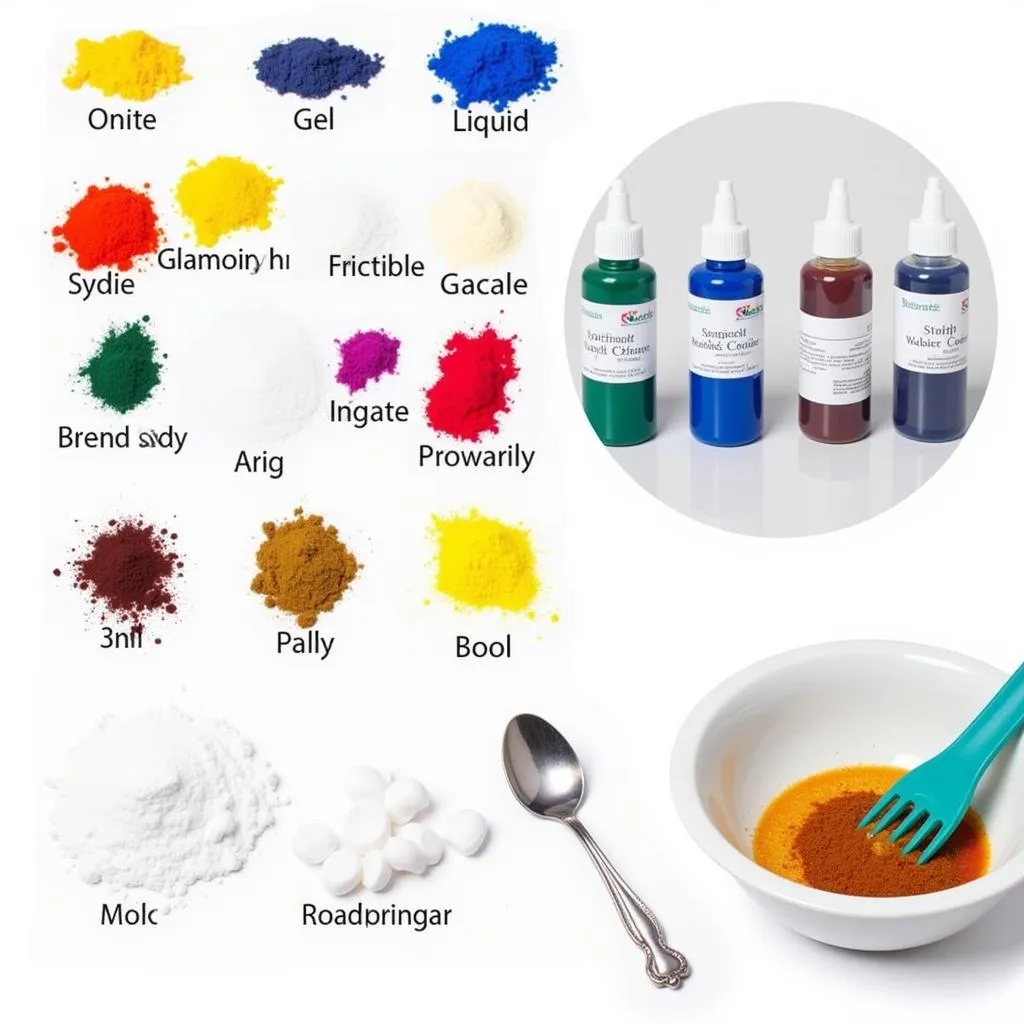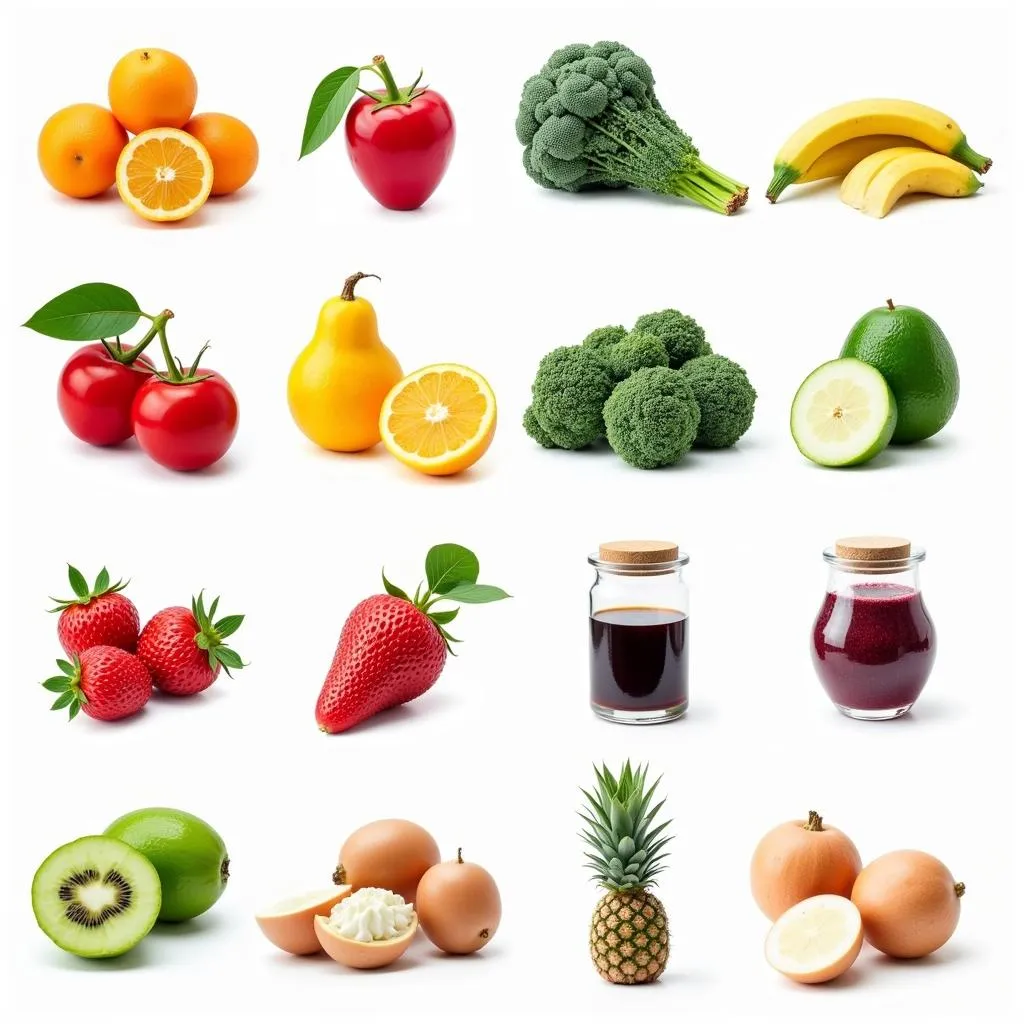Have you ever wanted to create vibrant and delicious dishes but felt intimidated by the world of food coloring? Fear not! This guide will equip you with the knowledge and techniques to mix food colors like a pro, unlocking a world of culinary creativity.
Understanding Food Coloring Basics
Food coloring comes in various forms, including liquid, gel, and powder. Each has its strengths and weaknesses, influencing how it blends and interacts with other ingredients. Let’s explore each type:
Liquid Food Coloring:
- Pros: Easy to mix and disperse in liquids.
- Cons: Can be less concentrated than other forms, requiring more drops to achieve desired vibrancy.
Gel Food Coloring:
- Pros: Highly concentrated, allowing for precise control and intense color.
- Cons: Can be a bit more challenging to mix and disperse, requiring careful blending.
Powder Food Coloring:
- Pros: Offers the most vibrant colors and a long shelf life.
- Cons: Requires a bit more preparation as it needs to be mixed with a liquid to form a paste before adding to the food.
The Art of Color Mixing: Tips and Tricks
Mixing food colors is a fun and rewarding process, but it takes practice and understanding the basics. Here’s what you need to know:
1. Start with a Base Color:
Just like painting, a base color forms the foundation for your desired hue. Choose a color close to your target shade and gradually add other colors to achieve the perfect blend.
2. The Power of White:
White food coloring acts as a neutralizer and diluter, helping to lighten shades and create a softer, more pastel effect.
3. Black and Grey Shades:
While you can mix black food coloring by combining primary colors, it’s often easier and more consistent to use ready-made black food coloring. Similarly, grey can be achieved by adding white to black.
4. Creating Secondary Colors:
Mixing primary colors creates secondary colors:
- Red + Yellow = Orange
- Red + Blue = Violet
- Yellow + Blue = Green
5. Achieving Tertiary Colors:
Tertiary colors are formed by mixing a primary color with a neighboring secondary color, resulting in subtle, nuanced shades. For example:
- Red + Orange = Red-Orange
- Blue + Violet = Blue-Violet
Practical Applications: Food Color Mixing in Action
Let’s delve into some real-world applications of food coloring mixing techniques.
Example 1: Making a Rainbow Cake
- Start with white batter: Prepare a standard cake batter.
- Divide the batter: Separate the batter into six equal portions.
- Add food coloring: Use gel food coloring to create the rainbow colors: red, orange, yellow, green, blue, and violet.
- Layer the batter: Pour each color into a separate greased and floured cake pan, layering from darkest to lightest.
- Bake and frost: Bake the layers according to your recipe. Once cooled, frost the cake to create a stunning rainbow effect.
Example 2: Achieving Natural Hues
While food coloring adds vibrant shades, you can also create beautiful natural colors using ingredients like fruits, vegetables, and spices. For example, beets can be used to create a vibrant pink, turmeric can be used to create a sunny yellow, and spinach can be used to create a bright green.
Food Color Mixing: Expert Insights
“Color mixing is a delicate balance of art and science. Experimenting with different combinations and quantities of food coloring is essential to discover your own unique palette,” shares [Name], a renowned pastry chef.
“Don’t be afraid to step outside the box and explore unconventional color combinations,” adds [Name], a renowned food stylist. “You might be surprised at the beautiful and unexpected results you achieve.”
FAQs:
Q: What is the best way to store food coloring?
A: Food coloring should be stored in a cool, dry place away from direct sunlight.
Q: Can I use food coloring to color chocolate?
A: Yes, you can use gel or powdered food coloring to color chocolate. However, it’s important to start with a small amount and add gradually to achieve the desired shade.
Q: What are some safe food coloring options for children?
A: Look for natural food coloring options made from fruits, vegetables, or spices.
Conclusion
Mastering food color mixing is a journey of exploration and creativity. By understanding the basics, experimenting with different combinations, and embracing expert advice, you can unlock a world of colorful culinary possibilities. Remember, the key is to have fun, be patient, and let your creativity flourish!
 Food coloring mixing guide for beginners
Food coloring mixing guide for beginners
 Natural food coloring options from fruits and vegetables
Natural food coloring options from fruits and vegetables
For further assistance or if you have any questions, please contact us at 02437655121, minacones@gmail.com, or visit us at 3PGH+8R9, ĐT70A, thôn Trung, Bắc Từ Liêm, Hà Nội, Việt Nam. We have a dedicated customer service team available 24/7.